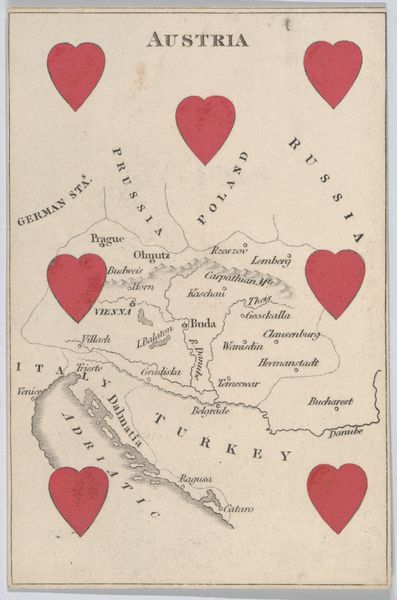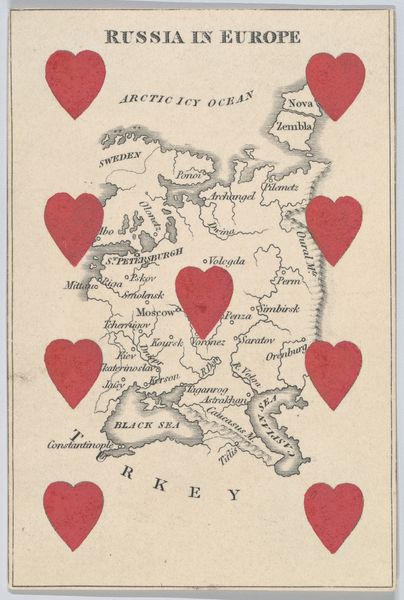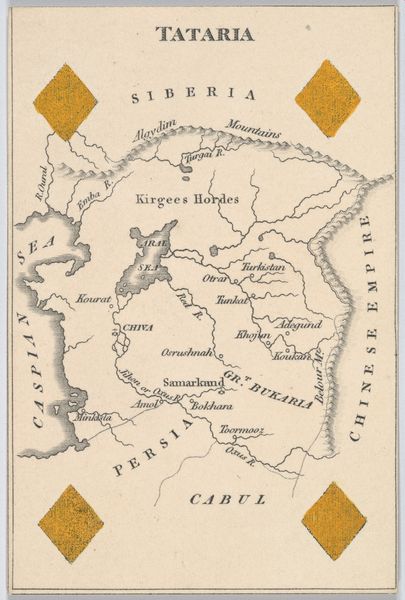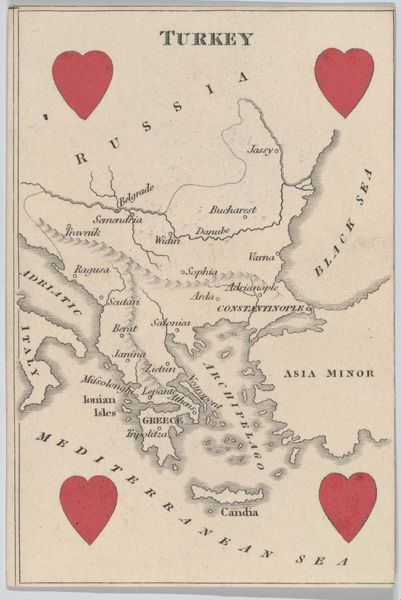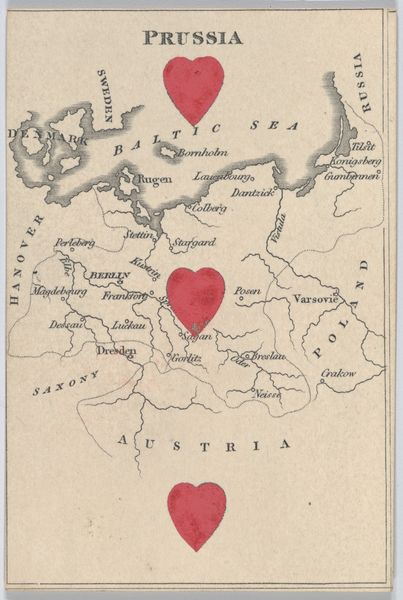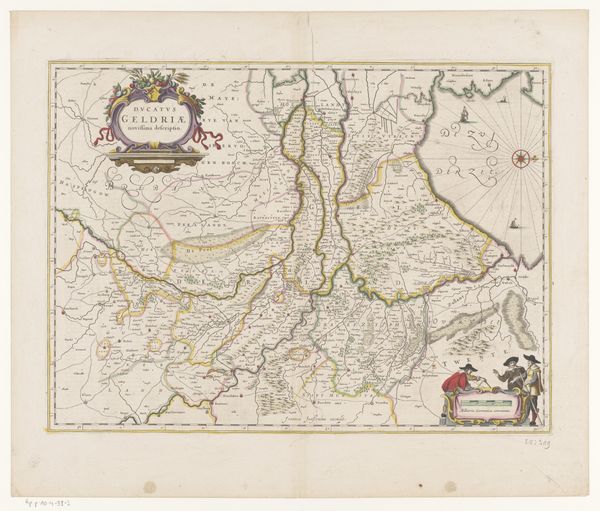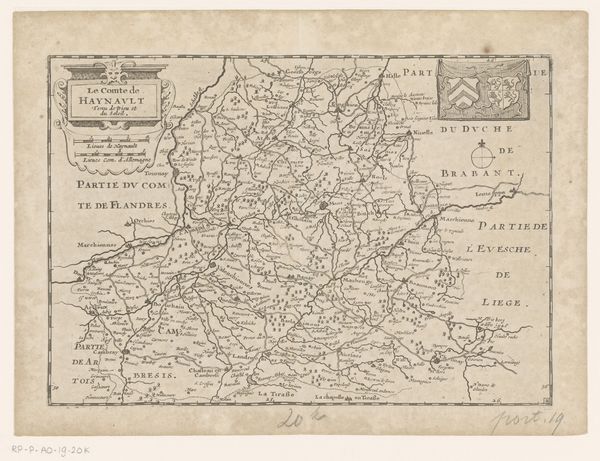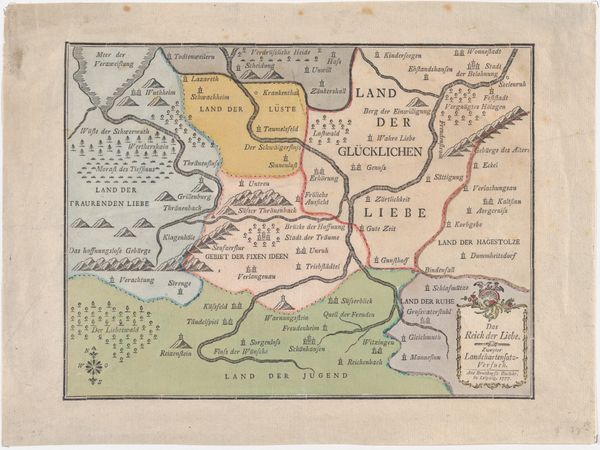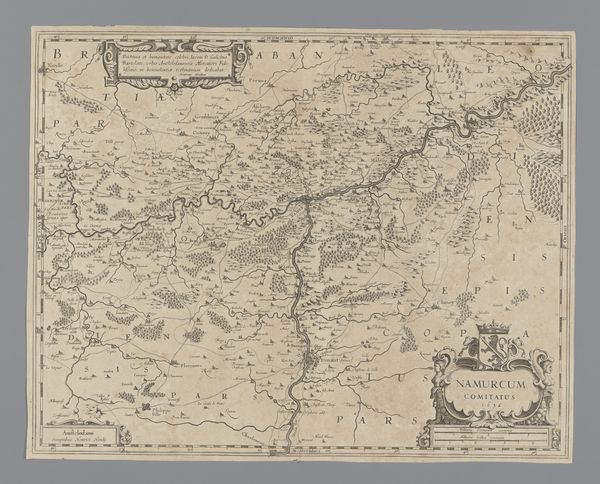
Spain and Portugal in Europe, from "Court Game of Geography" 1838 - 1855
drawing, lithograph, print, etching, engraving
drawing
lithograph
etching
landscape
history-painting
engraving
Dimensions: 3 3/4 × 2 1/2 in. (9.5 × 6.4 cm)
Copyright: Public Domain
Curator: What an interesting piece! This print is called "Spain and Portugal in Europe, from 'Court Game of Geography,'" dating from between 1838 and 1855. It’s by William and Henry Rock. Editor: It's striking. The hearts framing the landmass of Spain and Portugal create an immediate playful contrast to the quite stark geographical precision. It's visually very balanced despite the simple palette. Curator: Indeed. It’s a lithograph, etching, and engraving. Considering its origins in a geography game, the processes speak to broader shifts in education and leisure, particularly among the upper classes. Imagine children learning about geography through a game employing such a crafted object. The materiality becomes quite fascinating. Editor: The stark lines of the etching do give it a slightly formal air, almost a map masquerading as a playing card. The bold placement of the red hearts – could they function as a subtle nod to themes of empire and perhaps the 'heart' of European power? Curator: The hearts may point to colonial power, or even just a national pride during a time of intense nation-state building across Europe. I find myself wondering about the labor that went into creating it; were the Rock brothers directly involved in each print, and who comprised the workforce that ultimately rendered this pedagogical tool? Editor: Precisely, thinking structurally, one could deconstruct the print using semiotics: the map denoting territory, the hearts signifying perhaps royalty or affection. Yet, juxtaposed in this fashion, those symbols generate layers of meaning which exceed mere surface value. It all makes one reconsider how knowledge and cultural values get so deftly interwoven into these everyday objects. Curator: Thinking about accessibility too - lithography allowed for relatively mass production, and playing cards historically transgressed social boundaries. This merges high art techniques with democratized games, making me see the production processes in a much more compelling context. Editor: So true. What initially seems like a simple playing card unfolds into a complex synthesis of aesthetics, history, and socioeconomic factors. A deceptively rich artifact. Curator: Exactly, and it also illuminates our own perspectives; how differently we each analyze an object that unites elements of education, artistry, and the labor required to create something so playful yet potentially loaded with meaning. Editor: Yes, revealing indeed how subjective the experience with art becomes when applying varied lenses of interpretation!
Comments
No comments
Be the first to comment and join the conversation on the ultimate creative platform.
